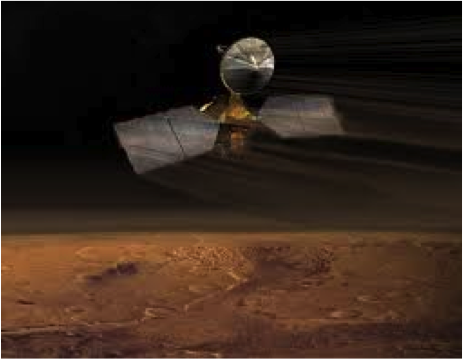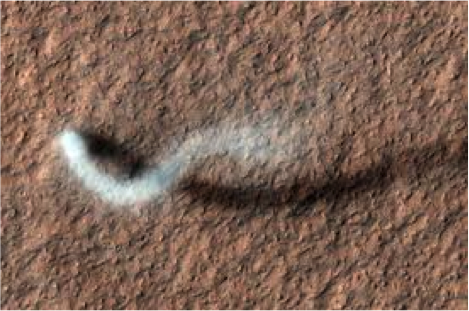
Mars Reconnaissance Orbiter entered a martin orbit on 10 March 2006. Aerobraking was used over the next six months to lower the orbit to the 255 x 320 km science orbit (with periapsis over the south pole and apoapsis over the north pole) resulting in 12 sun-synchronous orbits per day. The instruments a high resolution visible stereo imaging camera, a visible/near-infrared spectrometer to study the surface composition. an infrared radiometer to study the atmosphere; a shallow subsurface sounding radar provided by the Italian Space Agency, a wide-angle camera and a narrow-angle camera. MRO was equipped with Ka-band communications and aerobraking and tracking data were generated to provide atmospheric and gravity information.
Basic Mission Goals
The science objectives of the mission were to: characterize the present climate of Mars and its physical mechanisms of seasonal and interannual climate change; determine the nature of complex layered terrain on Mars and identify water-related landforms; search for sites showing evidence of aqueous and/or hydrothermal activity; identify and characterize sites with the highest potential for landed science and sample return by future Mars missions; and return scientific data from Mars landed craft during a relay phase.
For More Information see the following
The Atmospheric data consists of
Basic Mission Goals
The science objectives of the mission were to: characterize the present climate of Mars and its physical mechanisms of seasonal and interannual climate change; determine the nature of complex layered terrain on Mars and identify water-related landforms; search for sites showing evidence of aqueous and/or hydrothermal activity; identify and characterize sites with the highest potential for landed science and sample return by future Mars missions; and return scientific data from Mars landed craft during a relay phase.
For More Information see the following
The Atmospheric data consists of
 PDS: The Planetary Atmospheres Node
PDS: The Planetary Atmospheres Node



